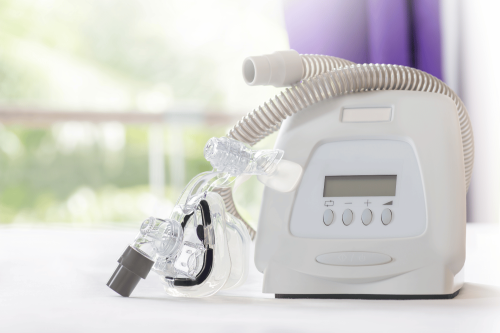
Heart emergencies can strike without warning, and knowing how to respond can mean the difference between life and death. While heart attacks and cardiac arrests are often used interchangeably, they are distinct medical conditions with different causes, symptoms, and treatments. Understanding these differences is crucial for providing the right first aid and potentially saving a life.
In this blog, we’ll explore the key differences between heart attacks and cardiac arrests, their symptoms, and the essential first aid steps you can take in each situation. Let’s dive in and equip ourselves with the knowledge to act confidently during these critical moments.
What is a Heart Attack?
A heart attack occurs when a blockage in the coronary arteries restricts blood flow to the heart muscle. This blockage is often caused by a buildup of fatty deposits, cholesterol, or other substances that form a plaque that narrows or obstructs the artery. The symptoms of a heart attack often develop gradually. These may include chest discomfort or pain that can radiate to the arms, neck, jaw, or back. Other symptoms include shortness of breath, nausea, lightheadedness, or cold sweats. While the onset of symptoms may not always feel sudden, the condition is life-threatening and requires immediate medical attention. Prompt treatment is essential to restore blood flow and minimize damage to the heart muscle. Delaying care can lead to severe complications or even death. Recognizing the signs early and seeking emergency medical help can significantly improve outcomes.What is Cardiac Arrest?
Cardiac arrest is a sudden loss of heart function caused by electrical disturbances in the heart. These disturbances disrupt the heart's ability to pump blood effectively to the rest of the body, including vital organs like the brain.
The onset of cardiac arrest is rapid and extremely dangerous, posing an immediate threat to life if not addressed within minutes. It can happen suddenly without warning, even in individuals who appear healthy.
Immediate intervention, such as cardiopulmonary resuscitation (CPR) and defibrillation, is critical for improving survival chances. These measures help restore the heart's normal rhythm and circulation, underscoring the importance of prompt action in a cardiac emergency.
Key Differences Between Heart Attack and Cardiac Arrest
Here is a table describing the differences between a heart attack and a cardiac arrest:
|
Criteria |
Heart Attack |
Cardiac Arrest |
|---|---|---|
|
Cause |
A blocked artery that restricts blood flow to the heart. |
An electrical malfunction that disrupts the heart's rhythm. |
|
Symptoms |
Gradual chest pain, shortness of breath, and discomfort. |
Sudden collapse, loss of consciousness, no pulse. |
|
Severity |
It can lead to cardiac arrest if untreated. |
Immediately life-threatening and requires urgent action. |
|
Treatment |
Medications, surgery, or stents to restore blood flow. |
CPR and defibrillation to restore the heart rhythm. |
What Does a Heart Attack Look Like?
A heart attack happens when the blood flow to the heart is wholly or partially blocked, depriving the heart of oxygen. Common symptoms of a heart attack include chest pain or discomfort, which may feel like pressure, squeezing, or fullness. This pain can last a few minutes or come and go.
Additionally, individuals may experience shortness of breath even at rest or during minimal physical activity. Other symptoms include nausea, sweating, or feeling lightheaded, which can sometimes be mistaken for other conditions.
The pain of a heart attack is not always isolated to the chest. It can radiate to other areas such as the arms, neck, or jaw, increasing the urgency to seek immediate medical attention. Recognizing these symptoms early can save a life.
What Does Cardiac Arrest Look Like?
Cardiac arrest is a critical medical emergency that demands immediate action. Here are common signs and symptoms of cardiac arrest:
- Sudden collapse often without warning.
- No pulse or breathing can be detected.
- Loss of consciousness, rendering the individual unresponsive.
- Possible gasping or abnormal breathing, which may occur briefly after collapse.
Recognizing these signs promptly is crucial, as rapid intervention can significantly improve outcomes.
First Aid Treatment for a Heart Attack
Heart attacks require immediate first aid to minimize damage and improve outcomes. Acting quickly and following these steps can make a significant difference in the person's recovery. Here are the first aid treatments to follow:
Call Emergency Services Immediately
The first step is to call for emergency medical assistance without delay. A heart attack is a life-threatening condition, and professional help is critical. Provide the dispatcher with detailed information about the person’s symptoms and condition.
Keep the Person Calm and Seated
Help the person sit down and remain calm. This reduces strain on the heart and lowers the risk of further complications. Encourage them to rest while waiting for emergency medical services to arrive.
Administer Aspirin if Not Allergic
If the person is conscious and not allergic to aspirin, give them a standard adult dose (typically 325 mg) to chew and swallow. Aspirin helps by thinning the blood, reducing the risk of further clot formation.
Monitor for Worsening Symptoms
Stay with the individual and observe them for any changes. Watch for signs of worsening symptoms, such as increased pain or difficulty breathing. Be prepared to provide additional aid if necessary.
Prepare for CPR if Needed
If the person becomes unresponsive and stops breathing, be ready to perform CPR. Begin chest compressions immediately and continue until professional help arrives. Ensure proper hand placement and compression depth during this lifesaving procedure.
First Aid Treatment for Cardiac Arrest
Cardiac arrest is a critical medical emergency where the heart suddenly stops beating. Immediate action is crucial to increase the chances of survival. Follow these steps to provide first aid treatment for cardiac arrest:
Call Emergency Services Immediately
At the first sign of cardiac arrest, dial emergency services without delay. Prompt medical attention is vital to the individual’s survival. Clearly communicate the situation and follow any instructions provided by the dispatcher.
Begin CPR with Chest Compressions
If the person becomes unresponsive and stops breathing, start CPR immediately. Place your hands in the center of the chest and push hard and fast at a rate of 100-120 compressions per minute. Allow the chest to rise fully between compressions.
Use an AED (Automated External Defibrillator) if Available
If an AED is accessible, turn it on and follow the voice prompts. Attach the AED pads to the individual’s chest as shown in the instructions, ensuring proper placement. Administer a shock if advised by the device, then resume CPR immediately.
Continue CPR Until Professional Help Arrives
Keep performing CPR and using the AED as necessary until emergency medical professionals arrive and take over. Maintaining continuous effort during this time is essential to improve survival outcomes.
How to Identify Heart Attack vs. Cardiac Arrest in an Emergency
Recognizing the difference between a heart attack and cardiac arrest during an emergency can be life-saving. Both conditions require immediate attention, but they present with distinct symptoms and call for different responses.
Heart Attack
A heart attack occurs when blood flow to the heart is blocked, typically by a clot. People experiencing a heart attack are usually conscious but may have severe chest pain or discomfort that can radiate to the arms, neck, or jaw. Other symptoms may include shortness of breath, nausea, sweating, or lightheadedness. While the heart continues to beat during a heart attack, it is a serious medical emergency that can lead to cardiac arrest if left untreated.
Cardiac Arrest
Cardiac arrest happens when the heart suddenly stops beating, often due to an electrical malfunction. Unlike a heart attack, individuals experiencing cardiac arrest are unconscious, with no pulse and no breathing. The absence of circulation during cardiac arrest requires immediate CPR and, if available, the use of an AED (Automated External Defibrillator) to restore normal heart rhythm.
Key Differences Between Heart Attack and Cardiac Arrest
|
Criteria |
Heart Attack |
Cardiac Arrest |
|---|---|---|
|
Consciousness |
Conscious with symptoms |
Unconscious |
|
Pulse and Breathing |
Present, though may be affected |
Absent |
|
Onset of Symptoms |
Gradual onset with warning signals |
Sudden and often without warning |
|
First Aid Response |
Call emergency services, keep individual calm |
Immediate CPR and AED use if available |
Understanding these differences can help bystanders take the right steps quickly to ensure the best possible outcomes in an emergency. Always call for professional help immediately in both scenarios.
Long-Term Complications of Untreated Heart Attack and Cardiac Arrest
Untreated heart attacks and cardiac arrests can lead to significant long-term health complications due to the critical role that the heart plays in pumping blood and supplying oxygen to the entire body. Below are some potential long-term consequences of these conditions:
Heart Attack
- Heart Failure A heart attack can weaken the heart muscles, impairing their ability to pump blood effectively. This condition, known as heart failure, requires long-term management and can significantly impact quality of life.
- Arrhythmias Damage to the heart’s electrical system during a heart attack can lead to irregular heart rhythms, or arrhythmias. These can range from mild conditions to life-threatening complications, requiring medical intervention.
- Permanent Heart Damage Prolonged lack of blood flow to heart tissue during a heart attack can cause irreversible damage. This affects the heart’s overall functionality and increases the risk of future cardiac events or complications.
Cardiac Arrest
- Brain Damage Cardiac arrest causes an immediate stoppage of blood flow, including oxygen supply to the brain. Within minutes, brain cells begin to die, leading to varying degrees of brain damage. Permanent neurological deficits or loss of cognitive functions are possible results if oxygenation is not restored quickly.
- Death Without immediate medical intervention, such as cardiopulmonary resuscitation (CPR) or use of automated external defibrillators (AED), cardiac arrest is often fatal. This highlights the critical importance of swift response in emergencies to prevent death.
Understanding these complications emphasizes the necessity of prompt recognition and treatment of heart attacks and cardiac arrests. Early intervention remains the key to reducing long-term health impacts and improving survival rates.
Take Action to Save Lives
Knowing how to respond in an emergency can be the difference between life and death. When faced with situations like a heart attack, cardiac arrest, or severe bleeding, recognizing the severity and taking immediate action is crucial. Understanding key differences, such as artery vs. vein bleeding, empowers individuals to act effectively and prevent life-threatening consequences.
Take proactive steps to prepare yourself for potential emergencies. Learn essential first aid techniques, including CPR, the use of an automated external defibrillator (AED), and managing severe bleeding. Don't wait until it’s too late—equip yourself with the knowledge and confidence to act decisively when it matters most.
Stay informed and ready to protect yourself and those around you. Enroll in a certified first aid course today and gain the critical skills necessary to save lives in emergencies. Acting quickly can make all the difference—be prepared to respond.








 Login with Google
Login with Google Login with Facebook
Login with Facebook